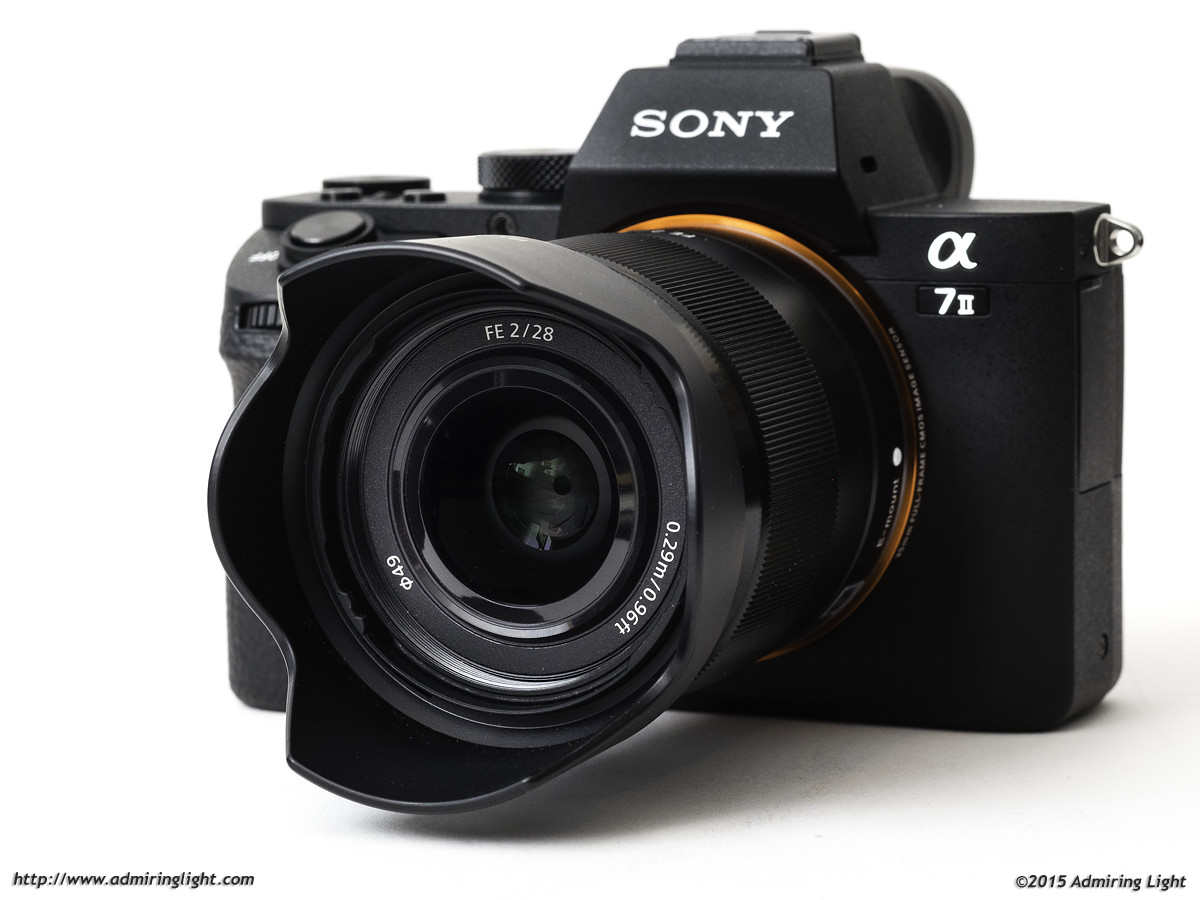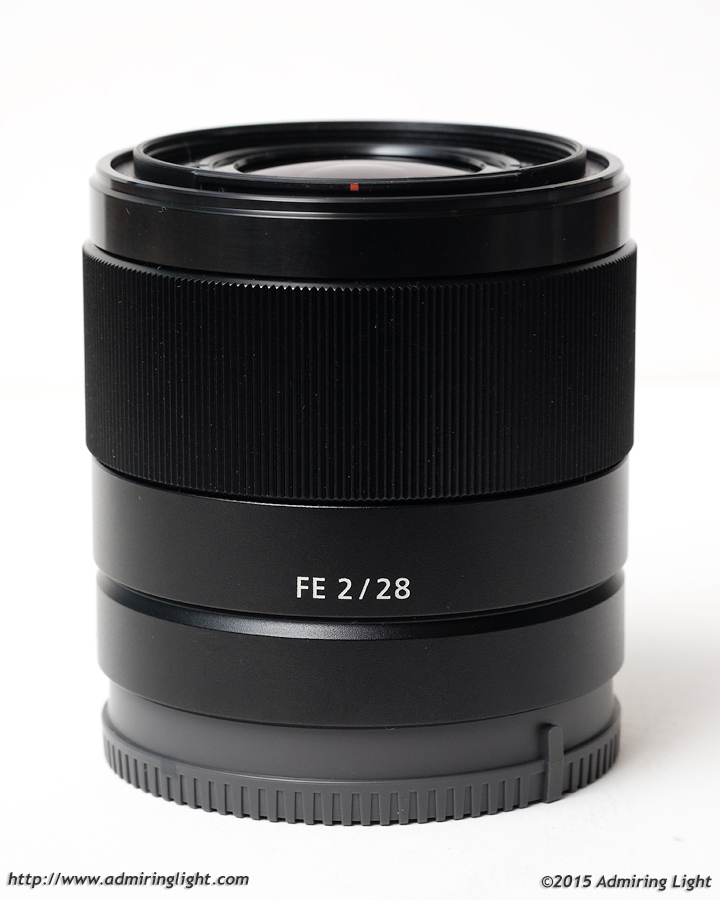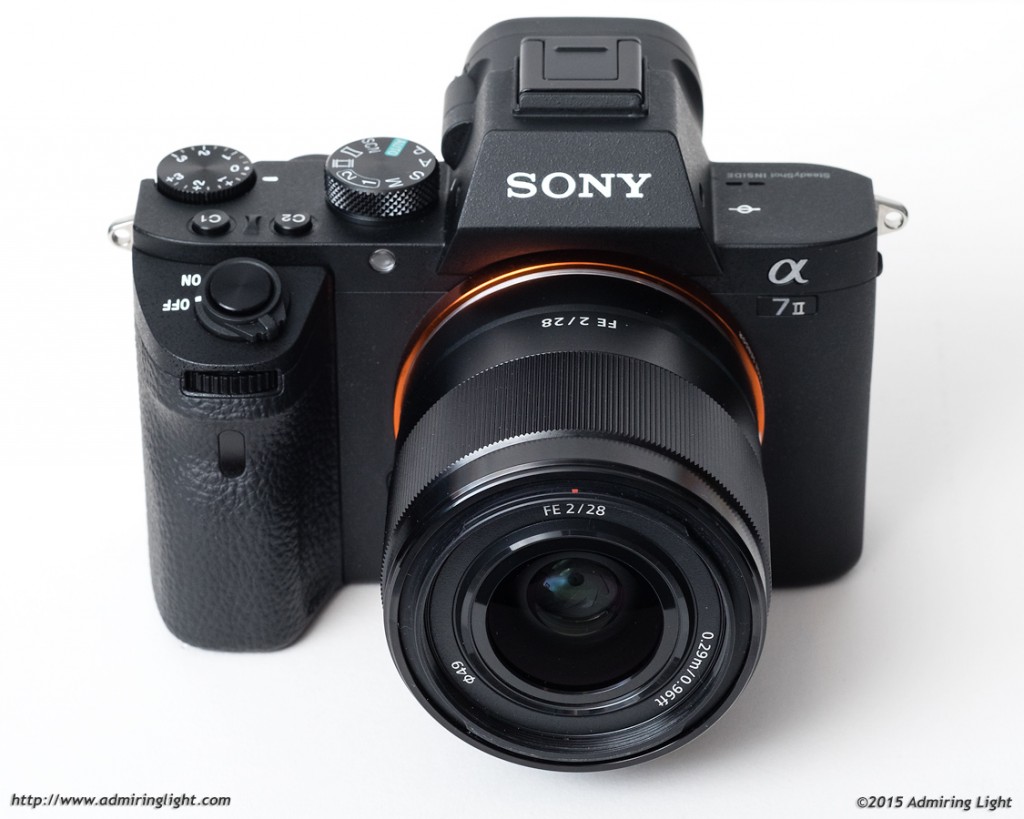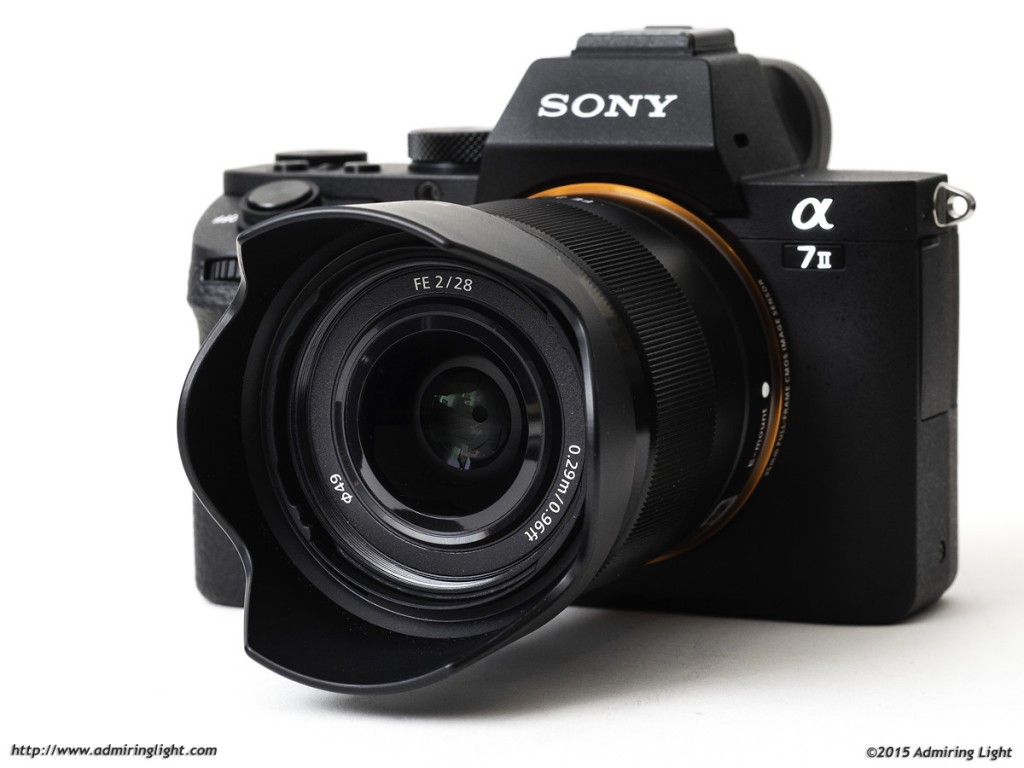Sony’s full frame FE lens lineup is somewhat small, but expanding quite rapidly. While Sony has done a nice job of filling in the gaps of the lineup, one of the downsides to the FE lens lineup has been the relatively high cost of almost all the lenses. That changes with the addition of the new FE 28mm f/2. The FE 28mm is a fast wide-angle prime that is compact and offers some versatility with the addition of two conversion lenses. Let’s dive into the details.

Construction and Handling
The Sony FE 28mm f/2 is a compact lens constructed predominantly of lightweight metals. The lens is tightly assembled and has no flex anywhere on the body. While the metal used is thinner and less substantial than that used in the Sony Zeiss lenses for E-Mount, the FE 28mm still feels like a quality piece.
The front of the lens beyond the focus ring is constructed of high-grade plastics, including the hood/conversion lens bayonet and the front filter threads. This is the only point I wish was more strongly constructed. The front bayonet seems small and thin considering it needs to support the weight of the rather weighty 21mm ultra-wide conversion lens and the 16mm fisheye conversion lens. While I didn’t have any failures using the 21mm conversion lens, I do wonder at the robustness of this connection with long-term use of one of these add-on lenses.

Autofocus
The FE 28mm f/2 features a generally quick and quiet autofocus motor. In good light, the lens locks fairly swiftly and silently, with good accuracy. However, I found AF to falter a bit in lower light, especially on subjects that are in a bit of shadow. Here, I frequently experienced hunting through the focus range and often found the lens to misfocus when it did ‘lock’ in these situations. These situations happen with most lenses with the A7 series autofocus system, but the 28mm seemed to fare worse than other FE lenses I’ve used on my A7 II. It would have been nice to see a better performance in this department.

Conversion Lenses
The FE 28mm f/2 adds some versatility by the ability to add two specialized conversion lenses to the front, changing the combination into a 21mm ultra-wide angle or a 16mm fisheye lens. My full review of the 21mm ultra-wide conversion lens can be found here. The ability to add a 21mm lens or fisheye lens to your bag with minimal cost does add considerable value to the FE 28mm, especially considering the current minimal choice at the wide-angle end of things in the lens lineup. With the exception of the rather large and expensive Zeiss FE 16-35mm f/4 OSS, these conversion lenses are the only other way to get an ultra-wide field of view, and they do so without breaking the bank.
I will say that it can be somewhat unwieldy to switch between these converters, but overall it’s a very nice and affordable way to add ultra-wide or fisheye capability to your kit. This is especially useful for the casual ultra-wide shooter. Be sure to check out my 21mm review for a much more in-depth discussion of using the converter with image samples.






Leave a Reply